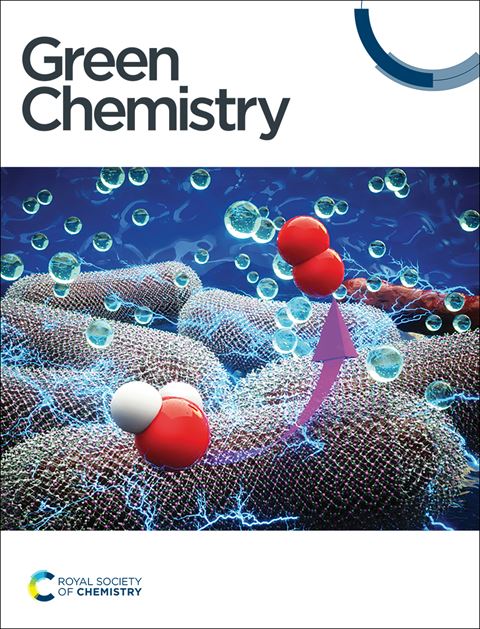IF 9.3
1区 化学
Q1 CHEMISTRY, MULTIDISCIPLINARY
引用次数: 0
摘要
木质素--自然界最复杂、最顽固的大分子--长期以来一直是生物质增值潜力尚未实现的典型代表。尽管数十年来人们一直在为选择性解聚以生产芳香族单体而殚精竭虑,但进展依然缓慢得令人尴尬。这篇透视文章探讨了这一问题:追逐高选择性的 "圣杯 "真的是对我们时间和资源的最佳利用吗?还是我们应该最终承认木质素的复杂性要求我们采用更加务实的方法?我们主张彻底改变观点,提倡 "液化优先 "战略,放弃完美解聚这一不可能实现的梦想,转而生产一种异质液体原料。这样,这种原料就可以进入现有的工业流程,而不必再纠结于单体纯度的问题。也许是时候重新评估木质素研究中的成功要素,并接受能让我们更快迈向碳中和未来的解决方案--而不是追逐选择性分解的独角兽。本文章由计算机程序翻译,如有差异,请以英文原文为准。

To break, or not to break: is selective depolymerization of lignin a Riemann hypothesis rather than a solution?
Lignin—nature's most complex, frustratingly stubborn macromolecule—has long been the poster child for biomass valorization's unrealized potential. Despite decades of hand-wringing over selective depolymerization to produce aromatic monomers, progress remains embarrassingly slow. This perspective article tackles the elephant in the room: is chasing the Holy Grail of high selectivity really the best use of our time and resources? Or should we finally admit that lignin's complexity demands a more pragmatic approach? We argue for a radical shift in perspective, advocating for a “liquefy-first” strategy that ditches the impossible dream of perfect depolymerization in favor of producing a heterogeneous liquid feedstock. As such, this feedstock could be fed into existing industrial processes, bypassing the tedious obsession with monomer purity. Maybe it is time to re-evaluate what success looks like in lignin research and embrace solutions that could move us faster toward a carbon-neutral future—without chasing the unicorn of selective breaking down.
求助全文
通过发布文献求助,成功后即可免费获取论文全文。
去求助
来源期刊

Green Chemistry
化学-化学综合
CiteScore
16.10
自引率
7.10%
发文量
677
审稿时长
1.4 months
期刊介绍:
Green Chemistry is a journal that provides a unique forum for the publication of innovative research on the development of alternative green and sustainable technologies. The scope of Green Chemistry is based on the definition proposed by Anastas and Warner (Green Chemistry: Theory and Practice, P T Anastas and J C Warner, Oxford University Press, Oxford, 1998), which defines green chemistry as the utilisation of a set of principles that reduces or eliminates the use or generation of hazardous substances in the design, manufacture and application of chemical products. Green Chemistry aims to reduce the environmental impact of the chemical enterprise by developing a technology base that is inherently non-toxic to living things and the environment. The journal welcomes submissions on all aspects of research relating to this endeavor and publishes original and significant cutting-edge research that is likely to be of wide general appeal. For a work to be published, it must present a significant advance in green chemistry, including a comparison with existing methods and a demonstration of advantages over those methods.
 求助内容:
求助内容: 应助结果提醒方式:
应助结果提醒方式:


